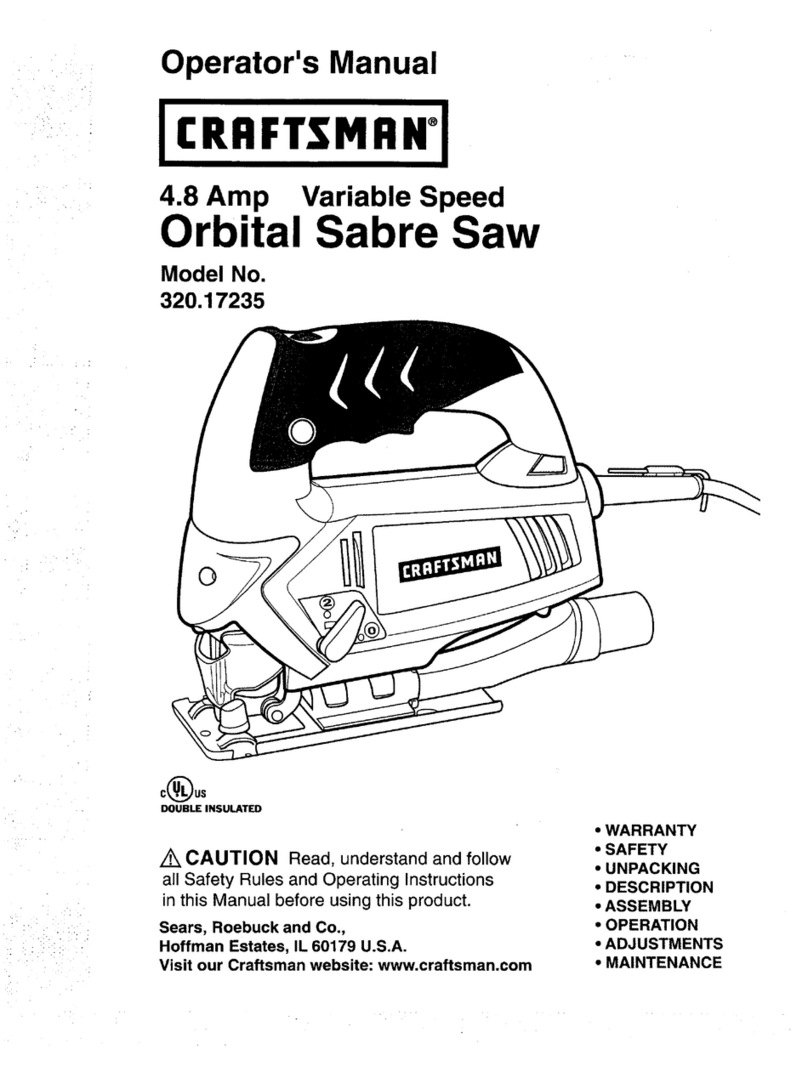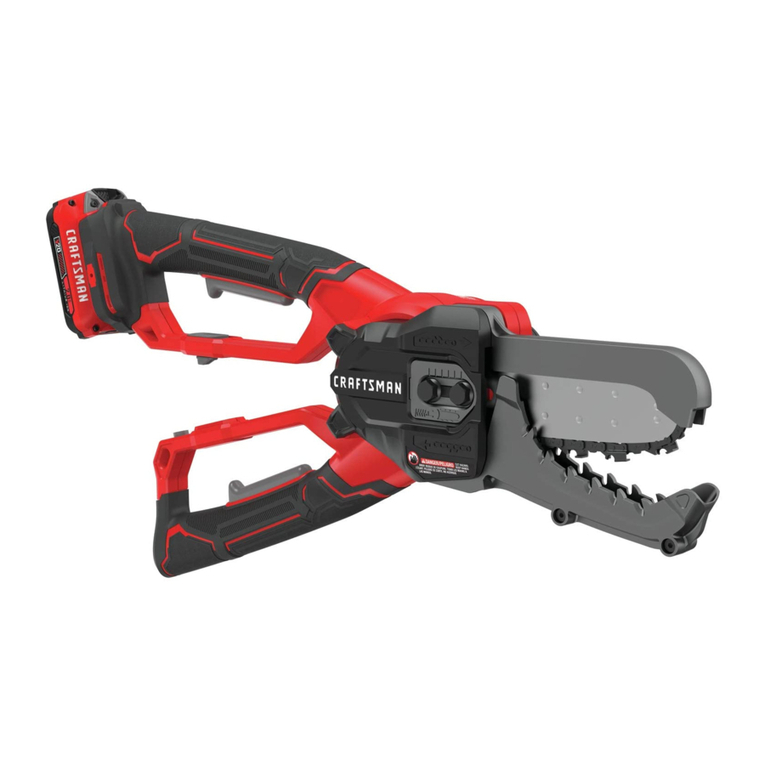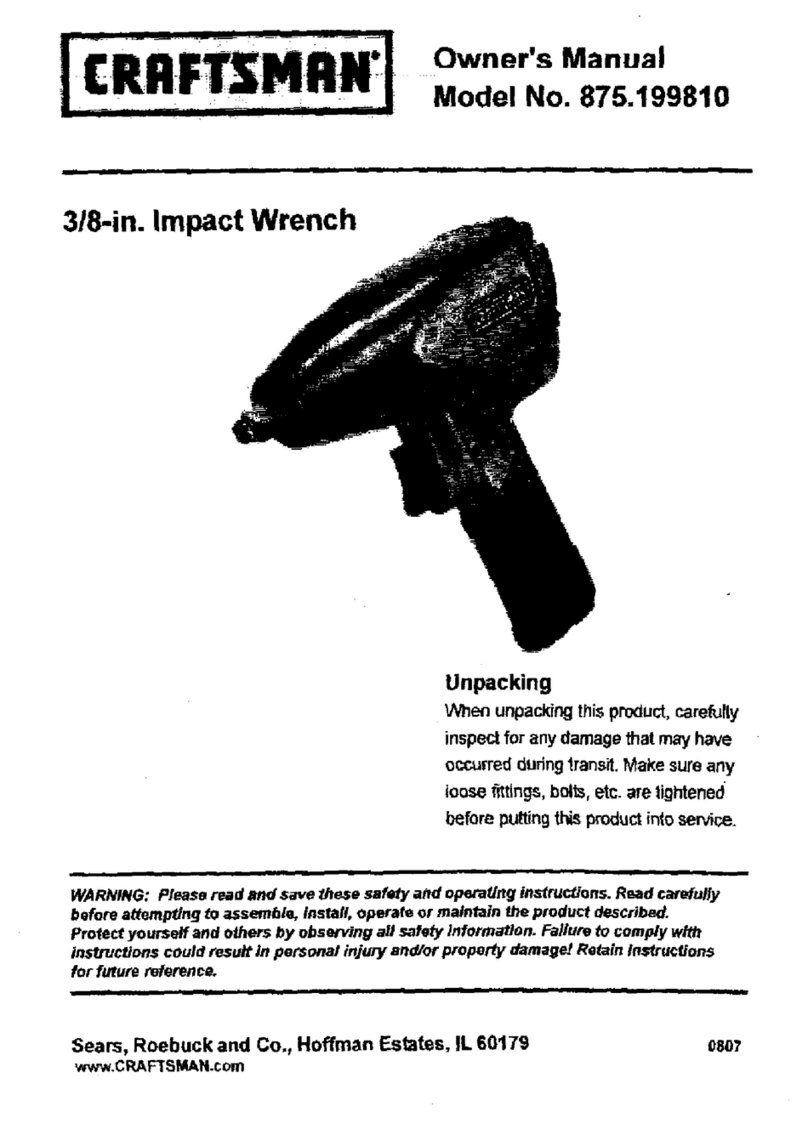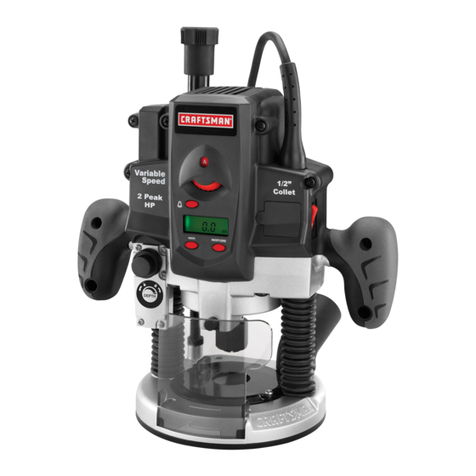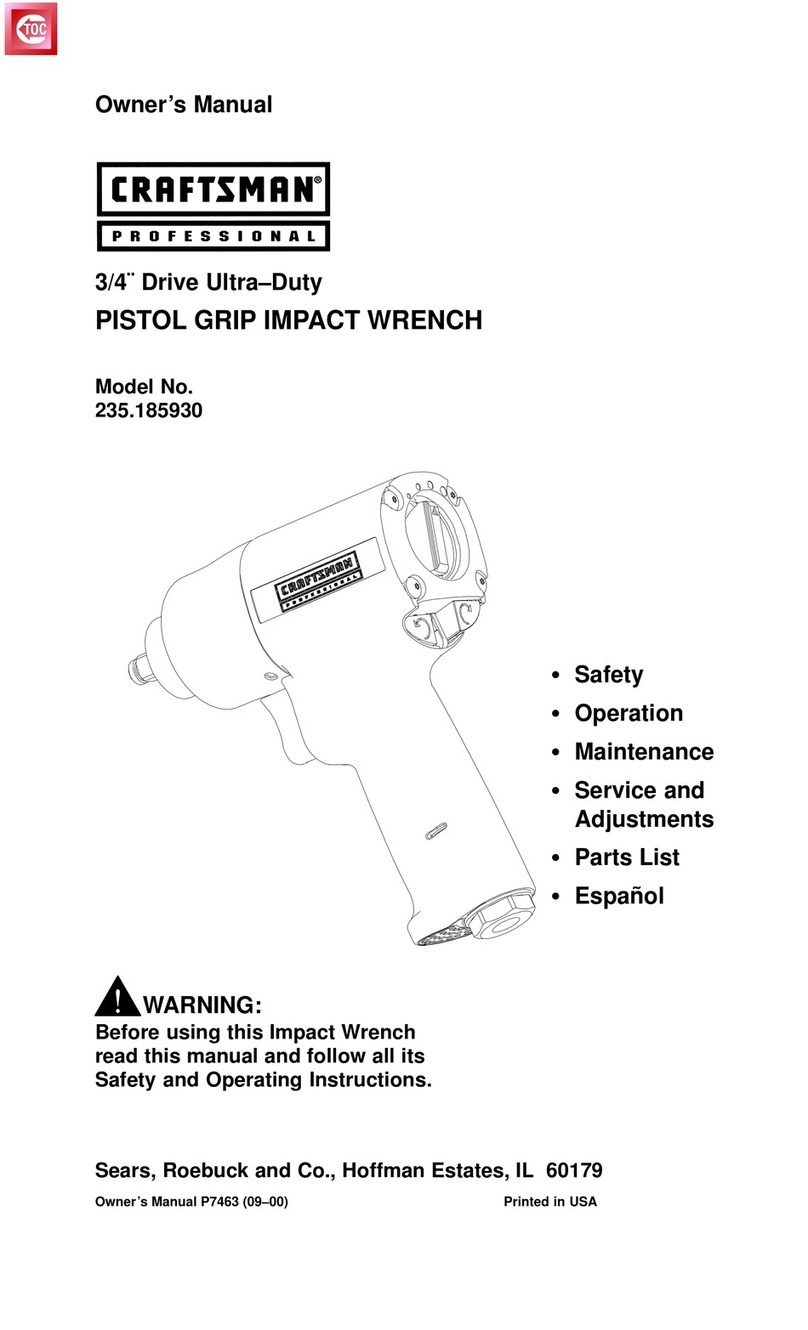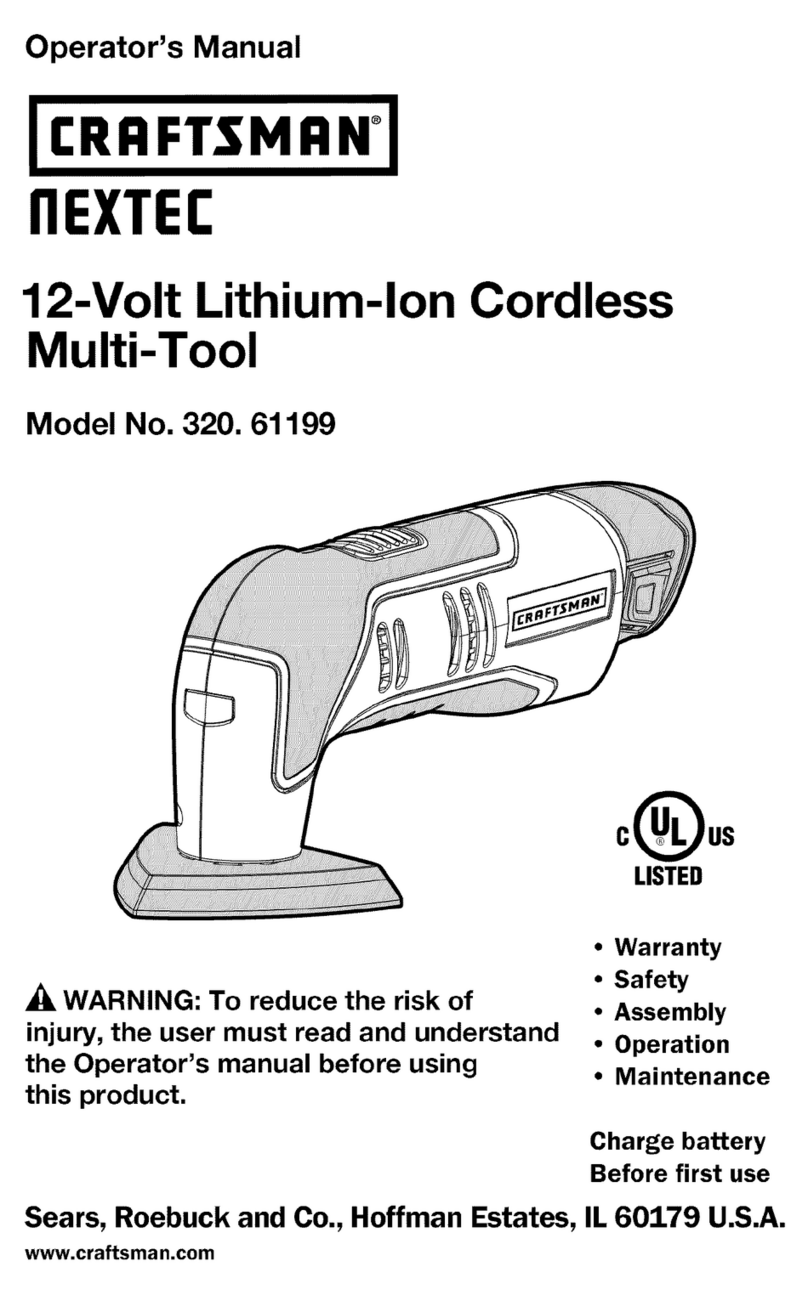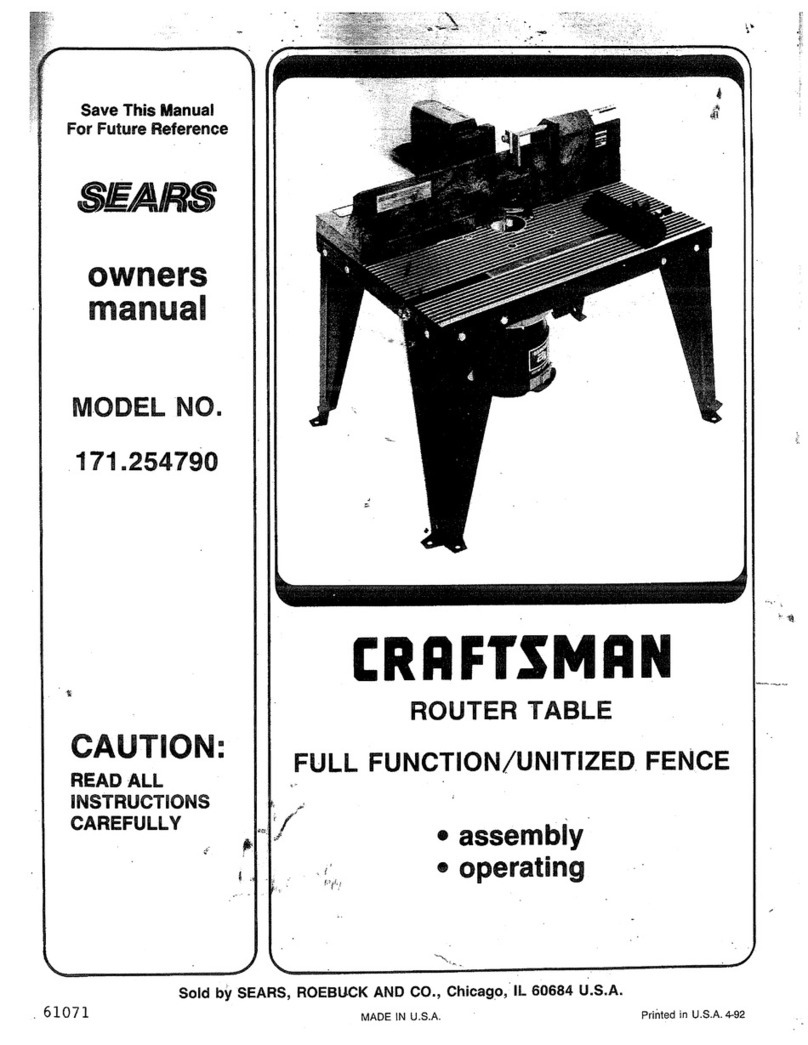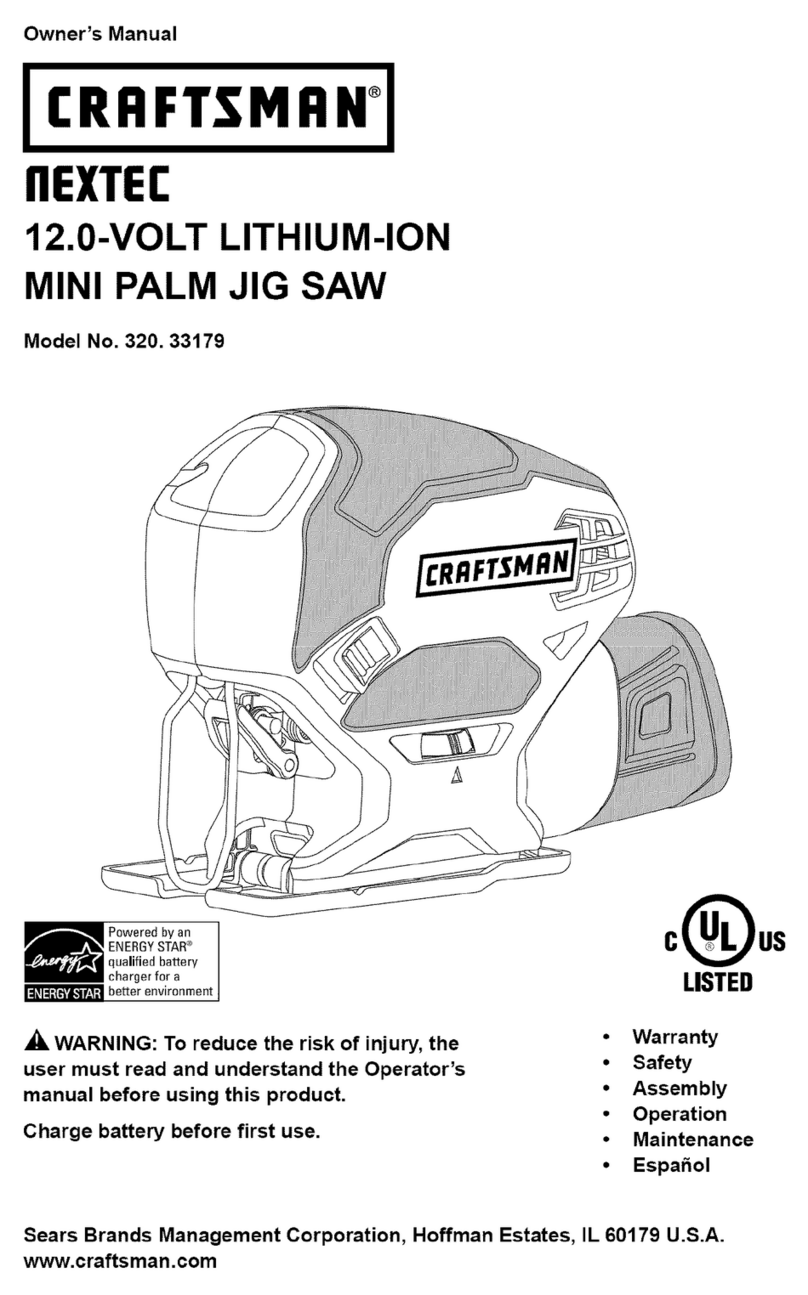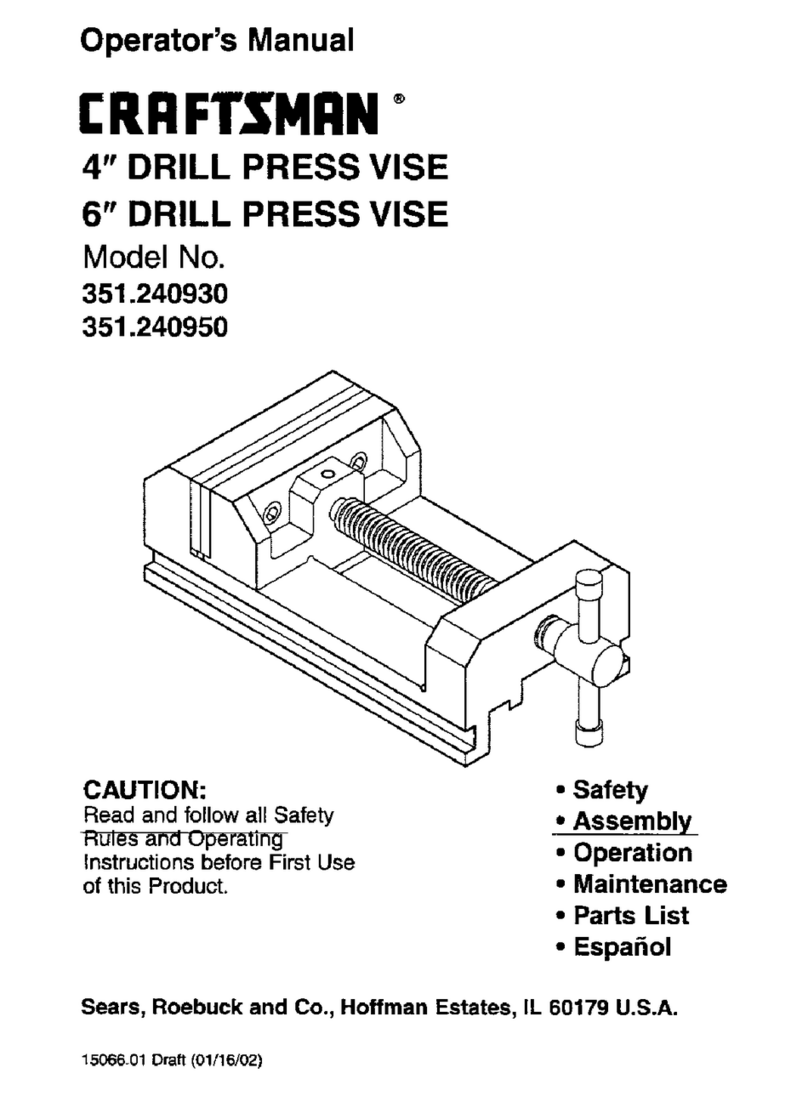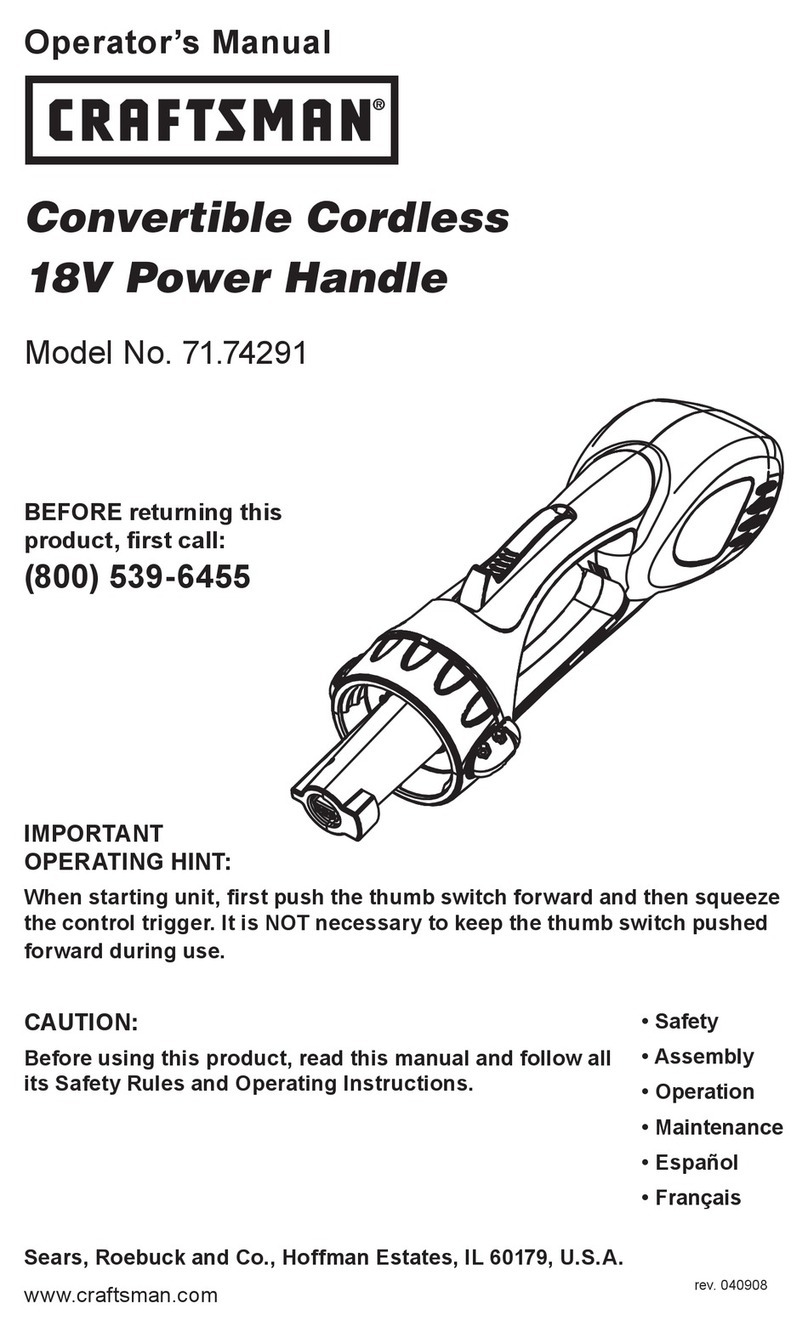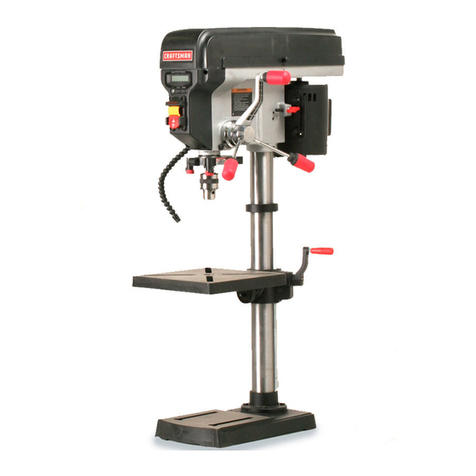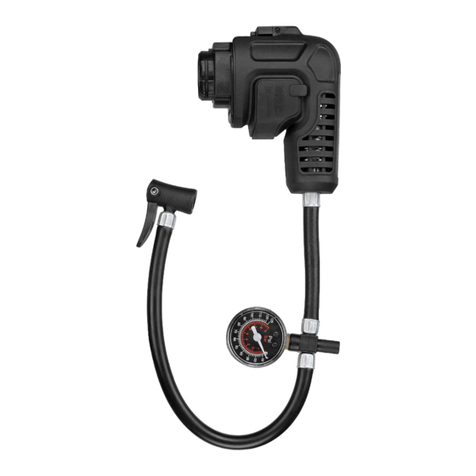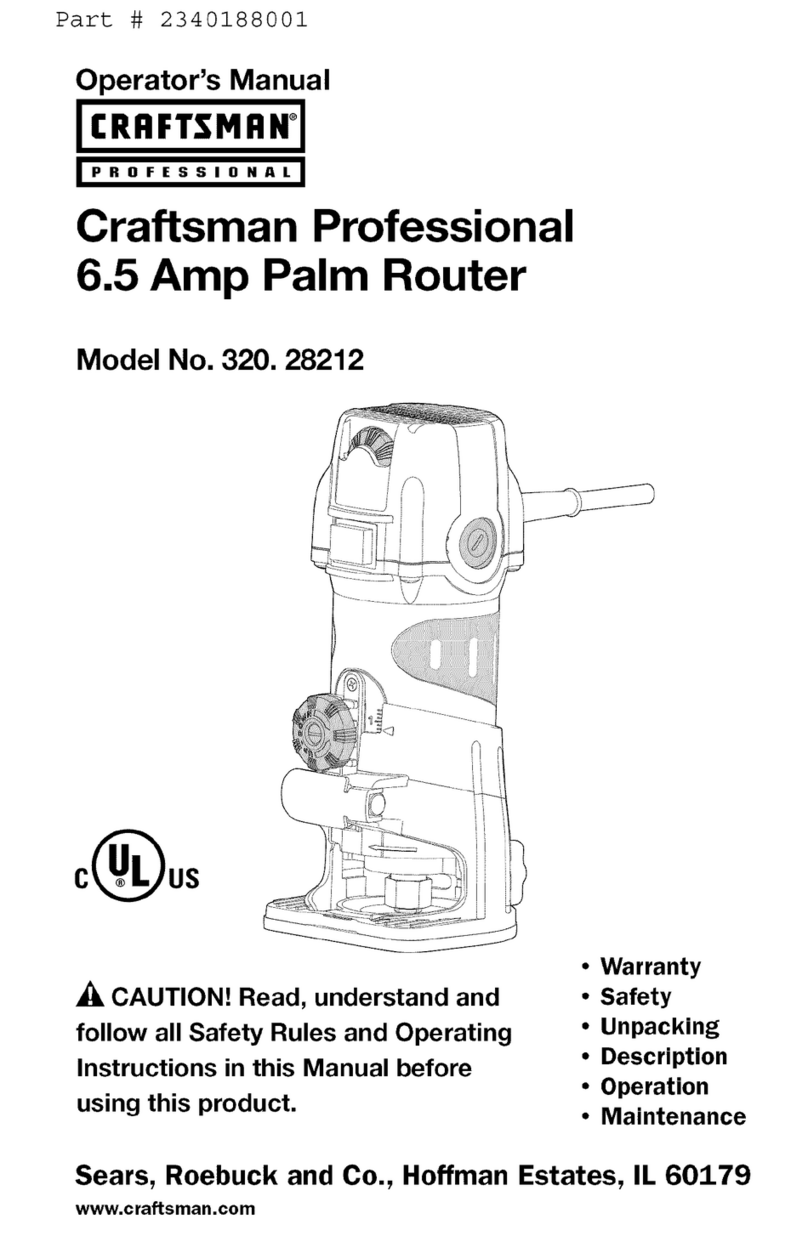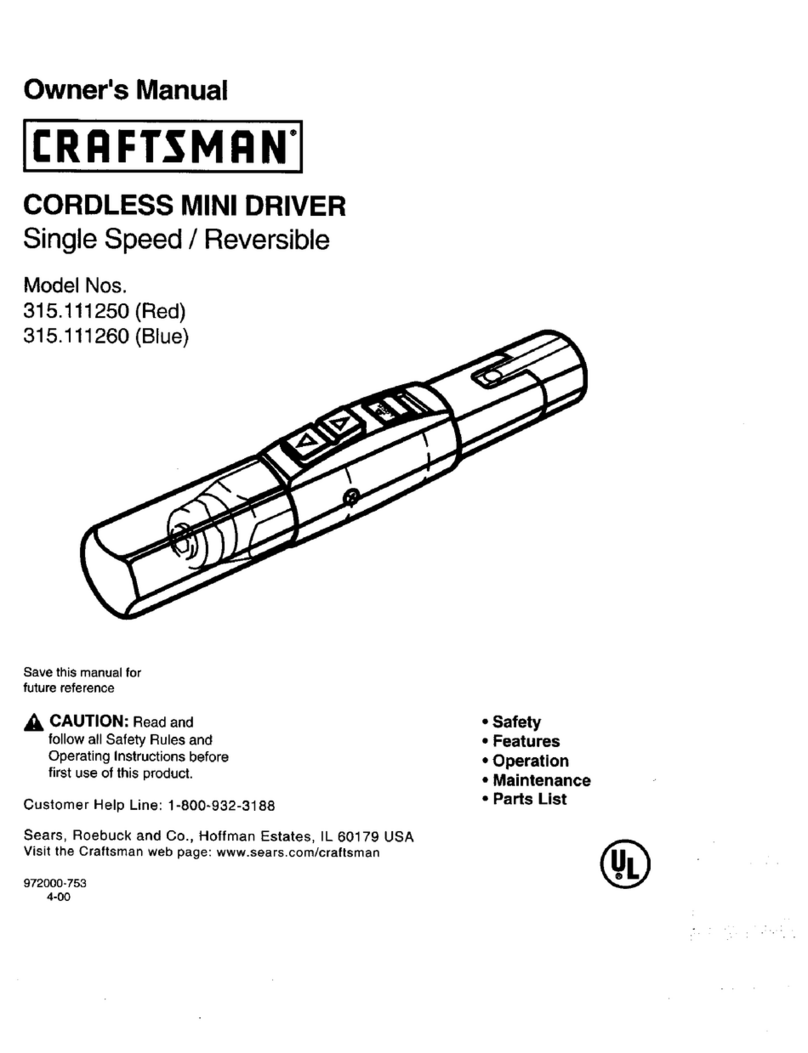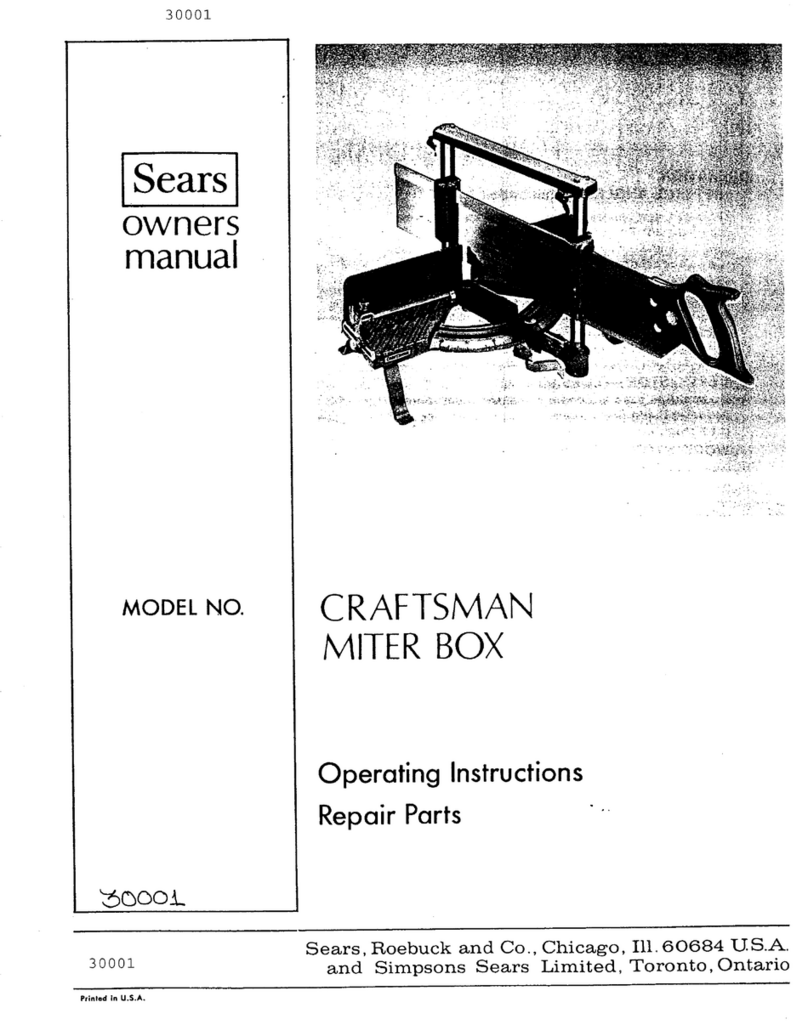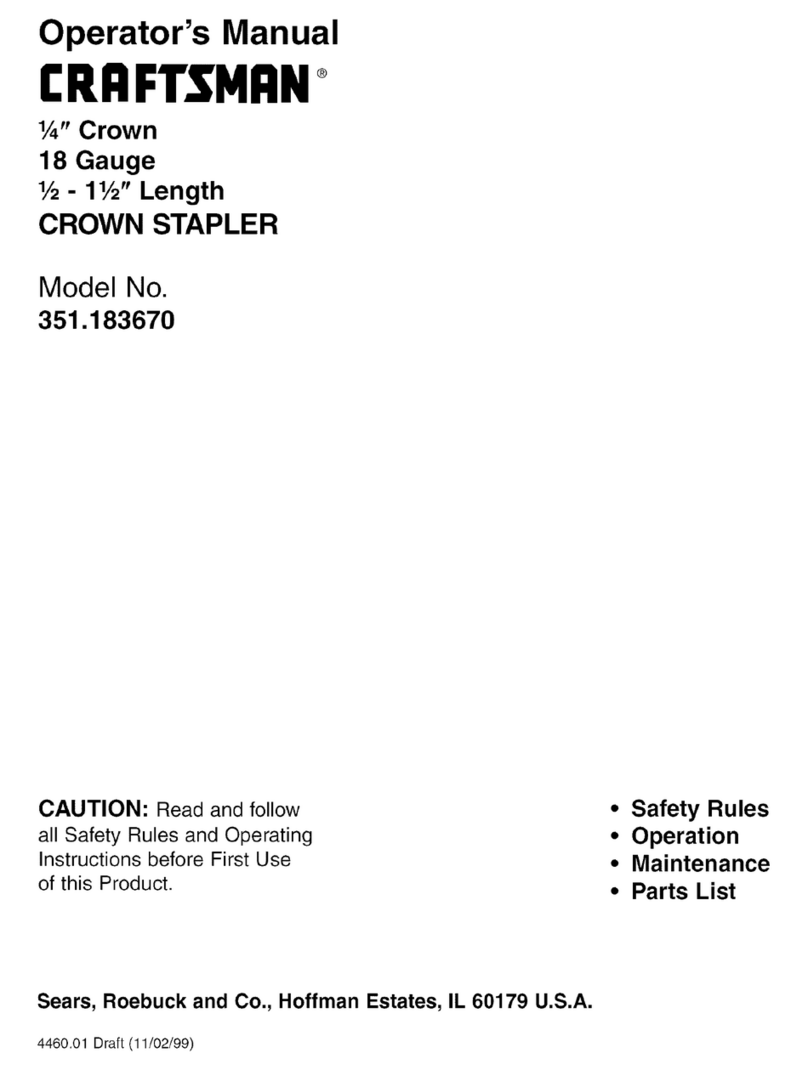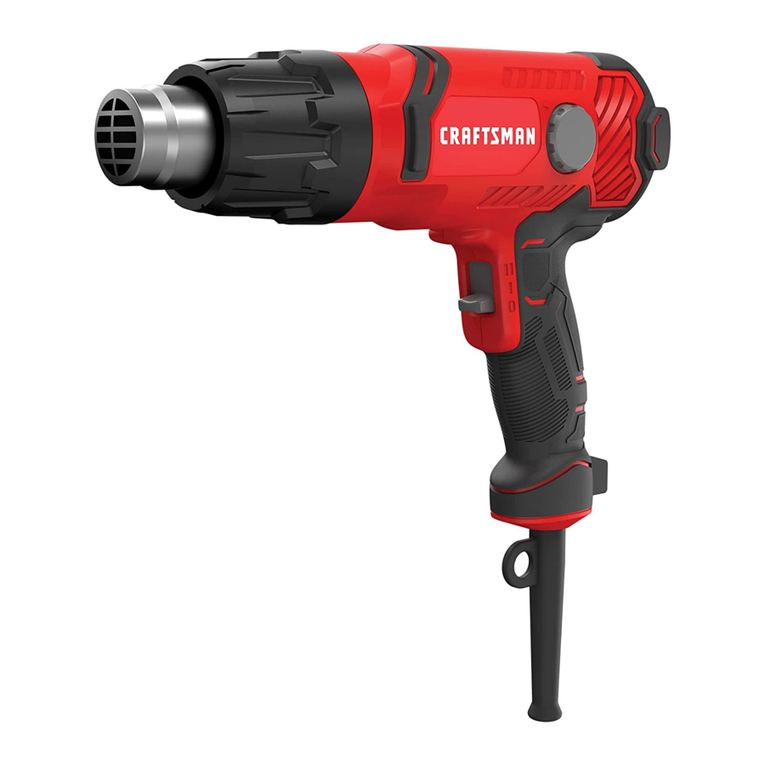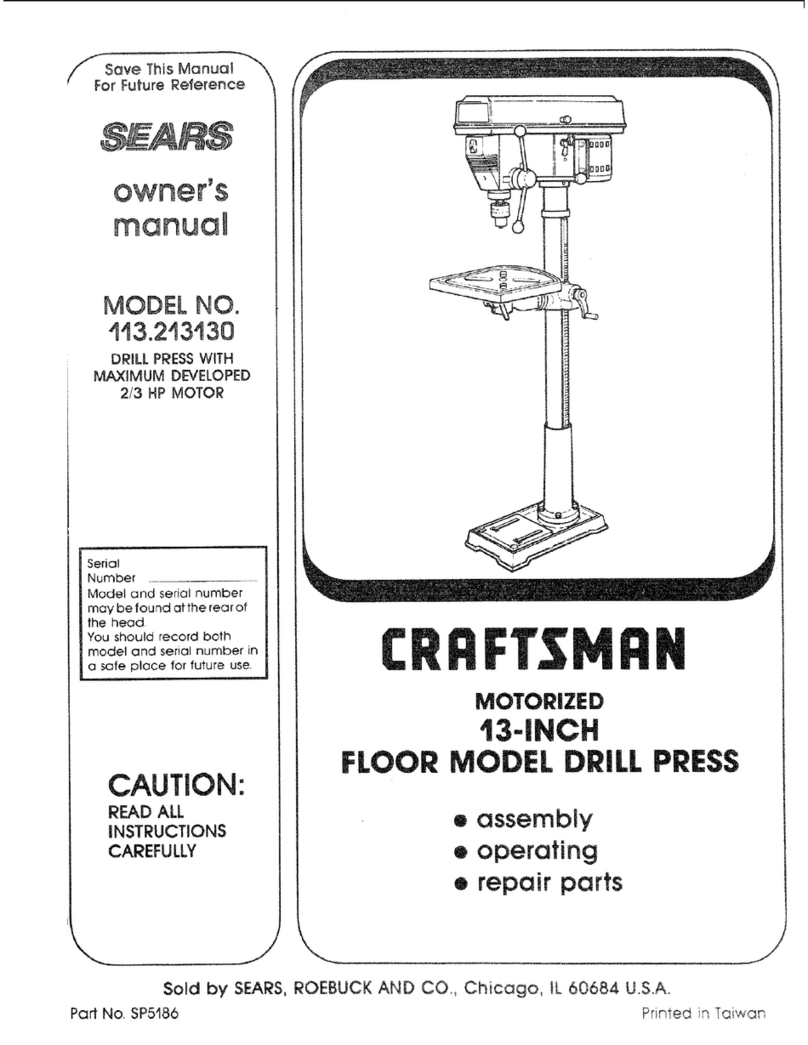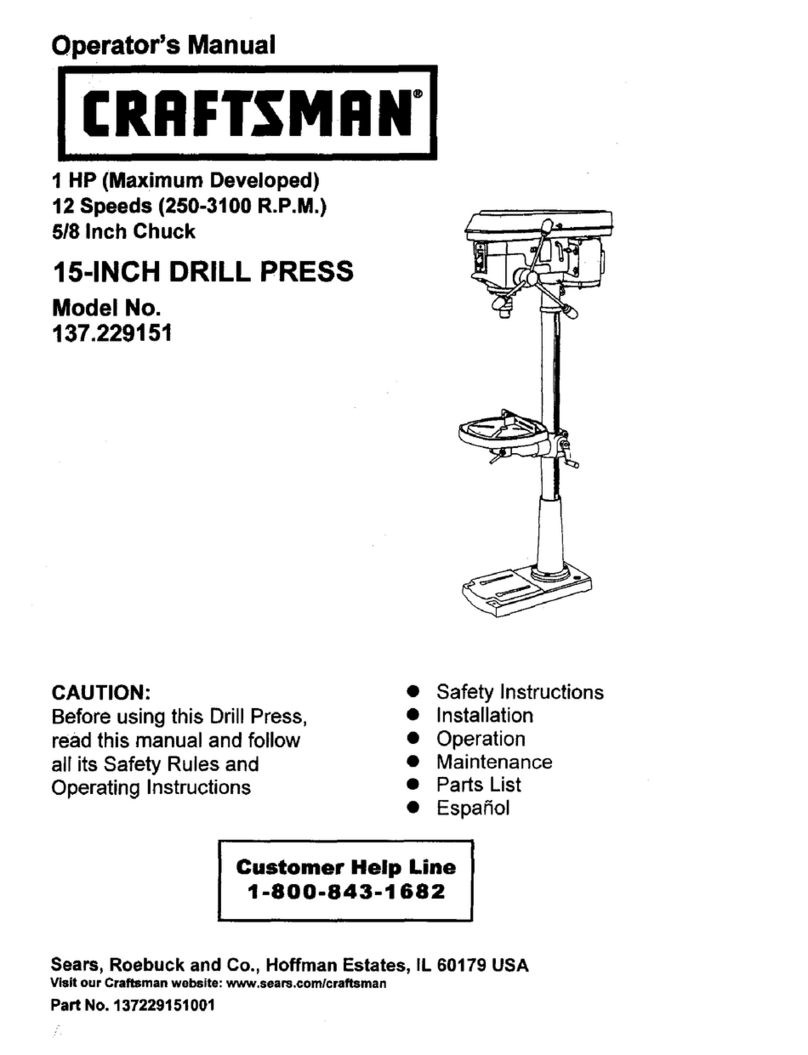•Disconnect the battery pack from the tool or place the switch in the
off position before assembly, making any, adjustments or changing
accessories. Such preventive safety measures reduce the risk of starting the
rotary tool accidentally.
• Always hold the hand piece firmly in your hands during the start=up. The
reaction torque of the motor, as it accelerates to full speed, can cause the
shaft to twist.
•Always wear safety goggles and dust mask. Use only in well ventilated area.
Using personal safety devices and working in safe environment reduces risk of injury.
• After changing the application tools or making any adjustments, make sure
that the collet nut and any other adjustment devices are securely tightened.
Loose adjustment devices can unexpectedly shift, causing loss of control.
Loose rotating components will be violently thrown.
• Do not reach in the area of the spinning application tool The proximity of the
spinning application tool to your hand may not always be obvious.
• Carefully handle both the rotary tool and individual grinding wheels to avoid
chipping or cracking. Install a new wheel if the rotary tool is dropped while
grinding. Do not use a wheel that may be damaged. Fragments from a wheel
that bursts during operation will fly away at great velocity, possibly striking
you or bystanders.
• Never use dull or damaged application tools. Sharp application tools must
be handled with care. Damaged application tools can snap during use. Dull
application tools require more force to push the rotary tool, possibly causing
the application tool to break.
•Inspect your workpiece before cutting. When cutting irregularly shaped
workpieces, plan your work so it will not slip and pinch the application tool,
which could cause the tool to be torn from your hand. For example, when
carving wood, make sure that there are no nails or foreign objects in the
workpiece. Nails or foreign objects can cause the application tool to jump.
• Never start the rotary tool when the application tool is engaged in the
material. The cutting edge may grab the material causing loss of control.
•Avoid bouncing and snagging the wheel, especially when working corners,
sharp edges etc. This can cause loss of control and kick-back.
•The direction of feed into the material when carving, routing or cutting is
very important. Always feed the application tool into the material in the
same direction as the cutting edge is exiting from the material (which is
the same direction as the chips are thrown). Feeding the tool in the wrong
direction, causes the cutting edge of the application tool to climb out of the work
and pull the rotary tool in the direction of this feed.
• If the application tool becomes jammed or slows down, turn the rotary tool
off with the switch. Wait for all moving parts to stop and detach the battery pack
from the rotary tool, then work to free the jammed material.
• Do not touch the application tool or collet after use. The application tool and
collet are too hot to be touched with bare hands after use.
31224 manual_Revised_11 0628 Page 8
